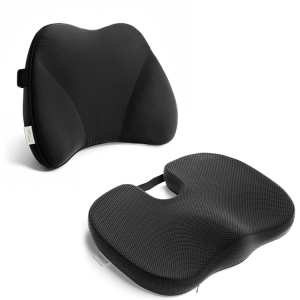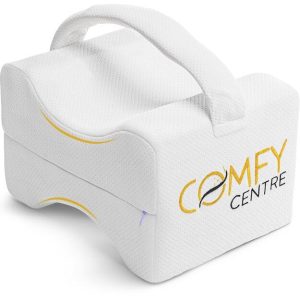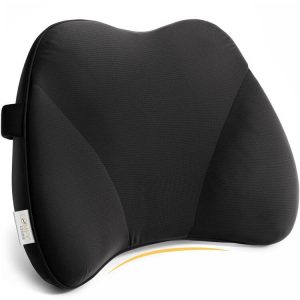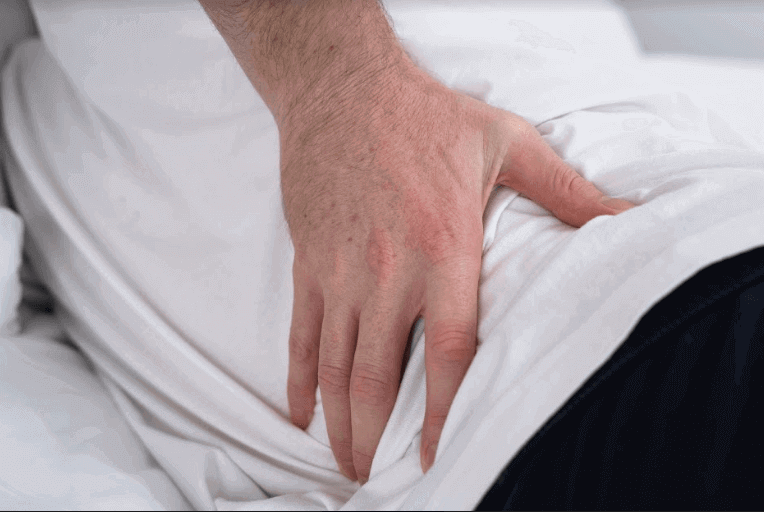
As we age, our disc degenerates as well, a natural process of humans aging. It causes discomfort to our lower back and neck, which heavily affects our quality of life.
However, understanding what causes degenerative disk disease and how we can prevent it from occurring will lead to long-term benefits with a happier and healthier lifestyle.
How Does The Spine Work?
The spine is definitely one of the most important parts of your body, it has the important job of giving your body the support it needs to maintain its shape and structure. It helps you move around and flexibly bend.
Keeping your spine healthy is very important. Without your spine, you would be nothing but a soggy, formless lump of skin. You wouldn’t be able to do anything or stand up for that matter.
It’s also a protective barrier for the spinal cord, a long column of nerves that connects the brain with the rest of your body, which allows you to move. Without this, you wouldn’t be able to move a single inch of your body, and your organs wouldn’t be functioning.
24 small bones called vertebrae to make up the spine. These bones are stacked on top of each other to form the spinal column. It would be a very rough ride for us if bone clashed with bone, that’s why there is a gel-like cushion in between every vertebra.
These cushions are known as discs and act as a shock absorber, absorbing the pressure or body takes whenever we move around and prevent the bone from rubbing against each other. These vertebrae are connected by ligaments.
These ligaments connect bone to bone. Tendons connect bone to the muscle. Some tendons connect muscles to the vertebra. Facet joints, similar to those found in the knee and elbow, link the vertebrae together and gives them the flexibility to move against each other.
What is degenerative disk disease?
Degenerative disk disease is when the usual changes that happen within the spine disks are the origin of pain.
Spinal disks, the gel-like cushion that acts as shock absorbers sandwiched between the bones of your spine, aids the back to remain flexible, allowing you to twist and bend without hurting yourself.
Like everything in your body, it can display symptoms of wear and tear as you age. You’ll the difference of how it’s slowly becoming ineffective versus how it felt when it was in perfect condition.
Nearly everyone's disks break down as time goes on. However, not everyone feels discomfort. If weary spinal is the cause of pain and discomfort, you most likely have degenerative disk disease.
What causes Degenerative disc disease?
Your spinal disks are composed of a jelly-like interior and a rubbery exterior. Certain conditions may cause the disc to modify in several aspects that may result in degenerative disc disease, like the following:
A dried-out disc - The disk on your spine was generally based on water on the day you were born. The disks begin to lose this water and become thinner as you age. Losing water means the disk gets thinner, and the thinner the disk, the lesser it can do to absorb shock.
This means there is less padding or cushion sandwiched between your vertebrae. In the long run, this can cause major problems that may result to cause your pain.
A crack - The disc in between the bones in the spine absorbs a huge amount of force every day. The stress brought on by the force, along with some minor injuries results in minuscule rips situated in the outer wall of the discs, where the nerves are found.
Any tear close to the nerves can be painful. The disc’s soft core might come out via the cracks if the outer wall starts to break, which may cause the disc to swell or slip-up. This is referred to as a slipped or herniated disc.
What are the risk factors?
Some of the risk factors of degenerative disc disease include:
- Your family has musculoskeletal disorders
- Injuries on the lower back from sports and other activities
- Obesity
- Smoking, or any form of nicotine intake
- Tension on the lumbar spinal discs from extended sitting and poor posture
- Weak or untrained core muscles
Symptoms of Degenerative disc disease
You might feel a sharp, continuous discomfort situated in your back and neck. The exact symptoms, which depend on the position of the disc in question and the changes it has caused.
Some of the common signs include:
- Discomfort that comes and goes. Can be severely nagging and can last from weeks up to months
- Soreness that gets becomes worse when you’re sitting down and gets better when moving
- Pain in the lower back, buttocks, or upper thighs
- Pain that worsens when bending, twisting, or lifting big objects.
- Pain goes away when changing positions or lying down.
- Some cases of degenerative disc disease can lead to numbness and tingling in your arms and legs, causing the muscles to become weak. This means the damaged disc is affecting nearby nerves.
How is Degenerative disc disease diagnosed?
In order to diagnose degenerative disc disease, the doctor will review your medical history and conduct a physical exam.
This may include imaging tests like X-rays, a magnetic resonance imaging scan (MRI), or computed tomography (CT) scan to get a better look at the discs and bony structures. All of these can help in diagnosing the condition.
The doctor may also interview you about the following:
- When did the discomfort start?
- Which portion of your spine is in pain?
- Has the pain spread to other areas of the body?
- Have you experienced spine-related injuries in the past?
- Has your immediate family experienced the same condition?
Possible Treatments
The main goal of treating degenerative disc disease is to get rid of the pain and prevent further damage. Depending on what the symptoms are and the seriousness of your condition, your doctor may or may not advise the following:
Medication
There are OTC medications, like aspirin, is effective in fighting inflammation. This can help alleviate the discomfort and reduce swelling. Stronger medicines may be prescribed to you when needed. The condition may also cause you to have muscle spasms and the doctor may give you medical treatment for that as well.
Physical therapy
Your therapist can help you by making you do specific movements that ensure that your neck and back are stronger and elastic. This will give the spine more support. Most of the time, PT and pain meds will be enough to provide a long-term solution.
Steroid shots
Steroid contains strong medications that do well to alleviate discomfort and inflammation. Your doctor may advise you to have a steroid shot of the fluid-filled zone neighboring the spinal cord known as the epidural space in your back.
Surgery
Should other treatments fail to work, surgery may be the last option. One of the procedures, known as discectomy, works by removing the damaged portion of the disc, taking pressure off of the nerves in the affected area.
In rare cases, the doctor may have to remove the damaged disc and replace it with a synthetic one. If your condition is very severe, your doctor may permanently fuse the bones positioned in the spine after removing the damaged disc.
How to prevent degenerative disk disease?
Avoid smoking
If you haven’t started, then don’t. But if you have, you must know that smoking increases the risk of desiccation, or it increases the risk of drying out the disc. Losing water means the disks get thinner, and the thinner the disk, the lesser it can do to absorb shock. This means there is less padding or cushion between your vertebrae.
Exercise
Do exercise that can help strengthen the supporting muscles around the spine regularly. Lift with proper body mechanics to avoid stressing your spine and herniating your discs
Maintain a healthy body weight
Being overweight will place more stress on your spine. This can alter its natural curve and press on the discs between the vertebrae which can potentially cause the disc to be herniated. It can also cause pressure on the nerves that travel through the central canal, and strain the muscles and ligaments that support your back.
Reduce alcohol intake
There have been studies that suggest that alcohol should be avoided by those suffering from back pain. The studies suggest that alcohol can increase the pain caused by conditions such as degenerative disc disease, facet disease, herniated discs, and other spine-related diseases.
Use a lumbar memory foam pillow
Memory foam, also known as Viscoelastic polyurethane foam, is a very well-known material used in mattresses and pillows.
It helps get rid of the aches and pains that the user feels in their most sensitive area. Memory foam works by taking the form of your body when in contact with your body heat and goes back to its original form the moment it cools down.
Lumbar memory foam pillows are a great investment, proved to be extremely effective over time. These foams:
- Are known to improve one's back position
- Can reduce compression in the spine, which can help to provide back pain relief
- Prevent further damage from certain conditions, including degenerative disc disease
- Are ideal for those who work long hours in front of a desk and are great for sleeping as well. It is also a big help for individuals who are driving for a long period
- Are very comfortable
- Can improve your blood circulation






